 12/2/2015: AHF Leaders attend Son of Saul Premier in Washington, D.C. AHF members Irvin Varkonyi and Atilla Kocsis attended the Premier of Academy Award-winning Hungarian film, "Son of Saul," in Washington, DC. In attendance were the current Hungarian ambassador, H.E. Reka Szemerkenyi, along with former ambassador Andras Simonyi and other dignitaries from the community. 12/2/2015: AHF Leaders attend Son of Saul Premier in Washington, D.C. AHF members Irvin Varkonyi and Atilla Kocsis attended the Premier of Academy Award-winning Hungarian film, "Son of Saul," in Washington, DC. In attendance were the current Hungarian ambassador, H.E. Reka Szemerkenyi, along with former ambassador Andras Simonyi and other dignitaries from the community.
Son of Saul won an Oscar for best Foreign Language Film, the second full-length Hungarian film to do so. It also won Cannes and many other prestigious awards. The Wall St Journal December 17, 2015 had this to say about the movie:
Good movies summon up worlds. “Son of Saul,” a great movie and a debut feature by László Nemes, summons up a world we may think we know from a visual perspective we’ve never encountered—the willed tunnel vision of a Jewish worker in a Nazi death camp. This point of view is doubly protective. We’re spared the worst of Auschwitz’s horror because the protagonist, a Hungarian named Saul Ausländer (a phenomenal performance by Géza Röhrig), is determined to keep what’s left of his sanity by focusing his gaze, and for a while his mind, on the ground in front of his feet and on whatever tasks may be at hand. His vision broadens only after he comes upon the corpse of a boy he chooses to think of as his son. That’s when he sees a chance to perform a moral act in the midst of the madness, and when Mr. Nemes’s film attains an ineffable beauty.
 The storytelling perspective is singular too. We’ve never before learned about a death camp’sworkings through two meticulously detailed days in the life of such a man. As a member of the Sonderkommando—Jewish prisoners forced to assist the Nazis in processing the remains of the doomed—Saul is a temporary trusty who will vanish in the ovens like all the other prisoners once his work tour is done. He’s also a target with a red X sewn onto the back of his jacket, lest he try to escape, and the camera often follows him from behind in remarkable tracking shots enhanced by an even more remarkable cacophony of ambient sounds. (The cinematographer was Mátyás Erdély. The sound designer was Tamás Zányi. The screenplay was written by the director with Clara Royer.) The storytelling perspective is singular too. We’ve never before learned about a death camp’sworkings through two meticulously detailed days in the life of such a man. As a member of the Sonderkommando—Jewish prisoners forced to assist the Nazis in processing the remains of the doomed—Saul is a temporary trusty who will vanish in the ovens like all the other prisoners once his work tour is done. He’s also a target with a red X sewn onto the back of his jacket, lest he try to escape, and the camera often follows him from behind in remarkable tracking shots enhanced by an even more remarkable cacophony of ambient sounds. (The cinematographer was Mátyás Erdély. The sound designer was Tamás Zányi. The screenplay was written by the director with Clara Royer.)
Tracking Saul from behind emphasizes his sense of purpose, as evidenced by his relentless forward motion, though it offers no clues to his inner life. Yet seeing him from the front isn’t much more revealing, since his gimlet eyes and impassive features barely react, if at all, to the bodies around him. Not until, that is, he fixates on one of them, and on the idea that he must save the boy’s body from the autopsy doctors, then from the flames, then find a rabbi to say Kaddish and provide a proper burial.
Suddenly Saul is part of the frantic commotion that he has previously helped to oversee. Buying off guards with “shiny”—valuables taken from the dead—he becomes a man possessed. Is he also delusional? Has he begun to believe that he has found his literal son, and does it matter? One thing that matters greatly to his Jewish comrades is that his obsession deflects him from playing his appointed role in a planned escape. “You failed the living for the dead,” he’s told scornfully. “Son of Saul” poses a host of questions without answers, and that accusation goes to one of them. But Saul’s choice can also be seen, in the film’s radiance, as faith giving meaning to life.
By JOE MORGENSTERN
[<< Back to All AHF Cultural News]
[<< Back to All AHF News]
| Read more about Hungarians in Film and Media on AHF's "Nobel Prize Winners and Famous Hungarians"
Related Articles
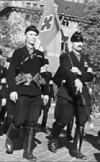 Further Reflections on 19 March 1944 and its Aftermath: A Perfect Storm of Tragedy and Folly: Regarding the history of the Hungarian Holocaust, two fundamental issues should be considered: the unacceptability of “whitewashing” or “cleansing” the Holocaust as well as the unacceptability of ”blackening” history by denying, omitting or belittling rescue initiatives and anti-Nazi activities in Hungary even after Nazi Germany invaded and occupied the country. [read more] Further Reflections on 19 March 1944 and its Aftermath: A Perfect Storm of Tragedy and Folly: Regarding the history of the Hungarian Holocaust, two fundamental issues should be considered: the unacceptability of “whitewashing” or “cleansing” the Holocaust as well as the unacceptability of ”blackening” history by denying, omitting or belittling rescue initiatives and anti-Nazi activities in Hungary even after Nazi Germany invaded and occupied the country. [read more]
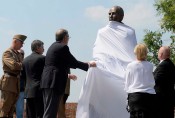 7/15/2015 - The American Hungarian Federation is especially proud to have sponsored a statue honoring Hungarian Holocaust Hero Col. Ferenc Koszorus. The unveiling of the bust, sculpted by the internationally recognized artist Imre Varga, took place in July 2015 in Budapest. An extraordinary man, a soldier and a hero, Col. Ferenc Koszorús had his statue unveiled on July 7, 2015 in the Castle Hill district at the Tóth Árpád promenade. 7/15/2015 - The American Hungarian Federation is especially proud to have sponsored a statue honoring Hungarian Holocaust Hero Col. Ferenc Koszorus. The unveiling of the bust, sculpted by the internationally recognized artist Imre Varga, took place in July 2015 in Budapest. An extraordinary man, a soldier and a hero, Col. Ferenc Koszorús had his statue unveiled on July 7, 2015 in the Castle Hill district at the Tóth Árpád promenade.
[read more]
 3/15/2015 - Book Signing in Budapest Honoring Holocaust Hero Col. Koszorus. On March 10, 2015, a book signing and reception introducing an excellent volume, "Armored Soldiers for Life: Ferenc Koszorus a Hero of the Holocaust" ("Páncélosokkal az életért: Koszorús Ferenc a Holokauszt hőse"), took place in Budapest. AHF was also a co-sponsor of the book. 3/15/2015 - Book Signing in Budapest Honoring Holocaust Hero Col. Koszorus. On March 10, 2015, a book signing and reception introducing an excellent volume, "Armored Soldiers for Life: Ferenc Koszorus a Hero of the Holocaust" ("Páncélosokkal az életért: Koszorús Ferenc a Holokauszt hőse"), took place in Budapest. AHF was also a co-sponsor of the book.
[read more]
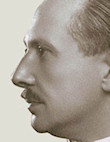 6/8/2012 - Hungarian Review publishes article, "The Soldier Who Saved the Lives of Budapest's Jews: Col. Ferenc Koszorus." The courageous intervention of Col. Ferenc Koszorus and his loyal First Armored Division on July 6, 1944 blocked the deportation of the more than 250,000 Jews of Budapest. In paying tribute to Col. Koszorus, former Congressman Tom Lantos, a survivor of the Holocaust, noted that the Koszorus intervention "permitted... Wallenberg, who arrived in Budapest on July 9, 1944, to coordinate his successful and effective rescue mission." [read more] 6/8/2012 - Hungarian Review publishes article, "The Soldier Who Saved the Lives of Budapest's Jews: Col. Ferenc Koszorus." The courageous intervention of Col. Ferenc Koszorus and his loyal First Armored Division on July 6, 1944 blocked the deportation of the more than 250,000 Jews of Budapest. In paying tribute to Col. Koszorus, former Congressman Tom Lantos, a survivor of the Holocaust, noted that the Koszorus intervention "permitted... Wallenberg, who arrived in Budapest on July 9, 1944, to coordinate his successful and effective rescue mission." [read more]
 6/12/2012 - In a related story, Heti Valasz publishes: "Emlékezzünk a magyar hősökre is! A Wallenberg-év lehetőségei": Mindent el kell követni, hogy Kelet-Európa valós második világháborús szerepe rögzüljön a nyugati és az amerikai köztudatban. [tovább] 6/12/2012 - In a related story, Heti Valasz publishes: "Emlékezzünk a magyar hősökre is! A Wallenberg-év lehetőségei": Mindent el kell követni, hogy Kelet-Európa valós második világháborús szerepe rögzüljön a nyugati és az amerikai köztudatban. [tovább]
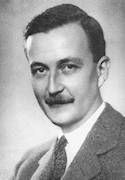 5/10/2013 - AHF publishes documents supporting the exoneration of Count János Esterházy (the only member of the Slovak Parliament in 1942 who voted against expelling the Jews, he was convicted on trumped up charges and died in a communist prison). The documents attest to his principled stand and actions to save Jews during World War II and protect the Hungarian minority in Slovakia, and includes letters from Simon Wiesenthal, Yad Veshem, and historians Dr. Magda Ádám and Dr. István Deák, Professor Emeritus from Columbia University. 5/10/2013 - AHF publishes documents supporting the exoneration of Count János Esterházy (the only member of the Slovak Parliament in 1942 who voted against expelling the Jews, he was convicted on trumped up charges and died in a communist prison). The documents attest to his principled stand and actions to save Jews during World War II and protect the Hungarian minority in Slovakia, and includes letters from Simon Wiesenthal, Yad Veshem, and historians Dr. Magda Ádám and Dr. István Deák, Professor Emeritus from Columbia University.
[read more]
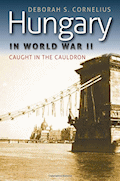 Hungary in World War II: Caught in the Cauldron by Deborah Cornelius, Fordham University Press, New York, 2011. Csaba Zoltani writes: "Deborah Cornelius’ Hungary in World War II: Caught in the Cauldron (Fordham University Press, New York 2011) gives an excellent overview of the events leading up to and the horrendous events of World War II in Hungary. The effect of the Treaty of Trianon, that without plebiscites, truncated Hungary and deprived it of its natural resources and forced a sizeable portion of its population to live under alien jurisdiction, set the political and sociological climate in Hungary from the 1920's on. [read more] or buy it now on AHF's Amazon Store! Hungary in World War II: Caught in the Cauldron by Deborah Cornelius, Fordham University Press, New York, 2011. Csaba Zoltani writes: "Deborah Cornelius’ Hungary in World War II: Caught in the Cauldron (Fordham University Press, New York 2011) gives an excellent overview of the events leading up to and the horrendous events of World War II in Hungary. The effect of the Treaty of Trianon, that without plebiscites, truncated Hungary and deprived it of its natural resources and forced a sizeable portion of its population to live under alien jurisdiction, set the political and sociological climate in Hungary from the 1920's on. [read more] or buy it now on AHF's Amazon Store! 
 4/16/2012 - Raoul Wallenberg Remembered on Capitol Hill. U.S. Congressman Harris recalls Col. Ferenc Koszorus, Sr., Hero of the Holocaust. AHF honors the millions of lives lost and the untold suffering caused by Nazism and Communism. But even during the horrors of WWII, stories of resistance to Nazi atrocities emerged. When Hitler's patience ran out with the conservative leaders in Budapest and their peace-feelers
and contacts with Western allies, Nazi Germany invaded Hungary in March 1944, drastically
changing the situation of Hungary and the Jewish community. [read more] 4/16/2012 - Raoul Wallenberg Remembered on Capitol Hill. U.S. Congressman Harris recalls Col. Ferenc Koszorus, Sr., Hero of the Holocaust. AHF honors the millions of lives lost and the untold suffering caused by Nazism and Communism. But even during the horrors of WWII, stories of resistance to Nazi atrocities emerged. When Hitler's patience ran out with the conservative leaders in Budapest and their peace-feelers
and contacts with Western allies, Nazi Germany invaded Hungary in March 1944, drastically
changing the situation of Hungary and the Jewish community. [read more]
 3/23/2011 - AHF honors Col. Ferenc Koszorus, Sr., reflects on Holocaust Memorial Month. AHF honors the millions of lives lost and the untold suffering caused by Nazism and Communism. But even during the horrors of WWII, stories of resistance to Nazi atrocities emerged. [read more] 3/23/2011 - AHF honors Col. Ferenc Koszorus, Sr., reflects on Holocaust Memorial Month. AHF honors the millions of lives lost and the untold suffering caused by Nazism and Communism. But even during the horrors of WWII, stories of resistance to Nazi atrocities emerged. [read more]
Why so many Hungarians across the border?
 One
thousand years of nation building successfully delineated groups
based on culture, religion, geography, and other attributes to create
the countries with which we are so familiar. While some Western European
nations would continue power struggles and princely battles and civil
wars, Hungary, founded in 896, was a peaceful multi-ethnic state for a
1100 years and her borders were virtually unchanged.... One
thousand years of nation building successfully delineated groups
based on culture, religion, geography, and other attributes to create
the countries with which we are so familiar. While some Western European
nations would continue power struggles and princely battles and civil
wars, Hungary, founded in 896, was a peaceful multi-ethnic state for a
1100 years and her borders were virtually unchanged....
Until 1920
The Treaty of Trianon in 1920... in the aftermath of WWI, was extremely harsh on Hungary
and unjustifiably one-sided. The resulting "treaty" lost Hungary
an unprecedented 2/3 of her territory, and 1/2 of her total population
or 1/3 of her Hungarian-speaking population. Add to this the loss of up
to 90% of vast natural resources, industry, railways, and other infrastructure.
This was done to a nation whose borders were established
over a thousand years earlier (896 A.D.) and one who, as the "Saviors
of Christianity," lost millions of lives defending the rest of Europe
from numerous invasions from the likes of the Mongolian Tatars and the
Ottoman Turks.
Poland, who shared a border with Hungary for centuries, and the United States never ratified the treaty. At the time President Wilson said: “The proposal to dismember
Hungary is absurd” and later Sir Winston Churchill said: “Ancient
poets and theologians could not imagine such suffering, which Trianon
brought to the innocent.” Others warned that a fragmented, weakened Central Europe and dismembered Hungary would open the door to Soviet expansionism. We are sad to report that they were
all right.
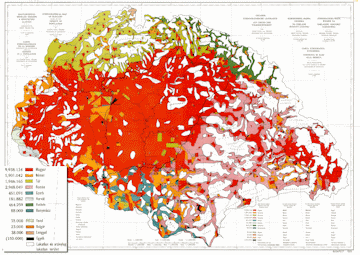
[download extra large image 4962x3509]
[download large image 1000x707]
Hungarian populations declined significantly after forced removals such as the Benes Decrees and other pograms, the effects of WWI, and Trianon in 1920. With continued pressure and discriminative policies such as the 2009 Slovak Language Law, the Slovak Citizenship Law, discriminatory practices in Rumania and Serbia, this trend has continued over the past 90 years. [Read more] about the Treaty of Trianon.
We are all volunteer and need your support! Join online!

|



